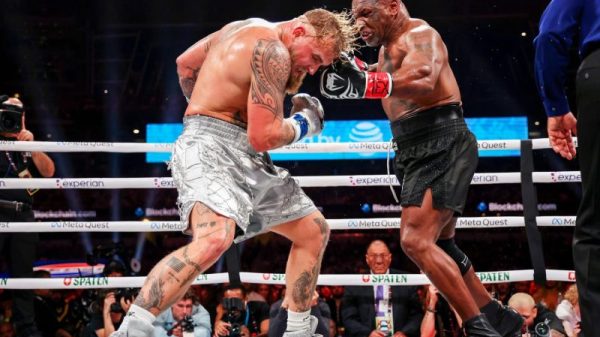It’s important to know what these terms mean. In addition, you should know under what circumstances you should buy to open and when you should buy to close.
(We have similar post on the opposite trade: Sell To Open vs Sell To Close)
What Is Buy to Open?
The term “open” comes from the fact that you are opening a position when you enter a trade. Buy to open, therefore, means you are buying an option to open a position.
You need to use a buy-to-open order whenever you want to purchase a new long call or long put. This may indicate to other participants in the market that you’ve spotted potential in the market, especially if you’re making a large order. However, if you’re only making a small order, it’s equally possible that you are using the buy-to-open order for spreading or hedging.
Let’s put this into real terms. Imagine you want to purchase a call option where the underlying stock is trading for a $1.30 premium and the expiry date is two months in the future. Let’s say the trading price is $50 with a strike price on the call of $55. To buy this call option through your brokerage, you would need to use a buy-to-open order.
When the time comes to exit the position, you’ll need to use a sell-to-close order. You can do this at any time — even the day after you use the buy-to-open order. In the above example, you may choose to sell to close if the underlying stock price increases to perhaps $57 before it reaches expiry date. When you use a sell-to-close order, the open option becomes closed.
Bear in mind that a buy-to-open order may not always execute. This can happen when an exchange limits to closing orders only during certain market conditions. One example of such a market condition is when the underlying stock for the option you are trying to buy to open is scheduled for delisting. Another reason could be that the exchange will not be trading the stock for some time.
What Is Buy to Close?
As you saw above, buy to open (and sell to close) applies to long calls and puts. For short positions, you have buy to close (and sell to open). In other words, you need a sell-to-open order to establish a new position with short calls and puts.
To be able to sell to open, you need collateral for the position. This can be in the form of the corresponding stock shares or the equivalent value in cash. In the case you have the shares, you’ll be sharing a covered position. If you don’t have shares, you are shorting the option or selling a naked position.
Then, when you want to close the position, you’ll need to use a buy-to-close order.
Selling to open is simple enough. Let’s look in greater detail at what we mean by buying to close.
First, you need to remember that, in options, selling short means writing a contract to sell to another buyer. Your aim is to see the underlying stock price drop, which will bring you a profit when the trade closes.
The trade will end either when it reaches maturity, with you buying back the position, or with the buyer exercising the option. (Exercising the option involves converting it into stock, which is rare.) You will make a profit if the selling or shorting price is higher than the purchase or cover price.
When you buy to close, you exit a short position that already exists. Put another way, you have an open position for which you have received net credit. By writing that option, you are closing that position.
Sell To Open And Buy To Close Example
Let’s put all this (both sell to open and buy to close) into another example. Say you decide that ABC stock is likely to increase in price and want to use the opportunity to make a profit. Therefore, you need to sell to open a put contract for $1.50. In this scenario, let’s imagine that you are right: the stock does increase. This results in making the put worth $0.75. Your profit would therefore be:
$1.50 – $0.75 = $0.75
Now, let’s say the position will not expire for two weeks. You want to secure your profit, meaning you need to close the position. This means you’ll need to use a buy-to-close order. And that’s it. You receive your $0.75 profit.
Buy to Cover
One thing to note: buy to close is not the same as buy to cover. The difference is buy to close is usually for options and sometimes for futures, whereas buy to cover is only for stocks. However, they both result in buying back the asset you originally sold short, meaning you end up with no exposure to the asset.
Buy to Open vs Buy to Close: When to Use Each
Now that you understand the difference between buy to open and buy to close, all that’s left is to be clear about when to use them.
When Should Investors Buy to Open?
Whenever you want to buy a call or put to benefit from a change in price of an underlying asset, you should buy to open. Taking buy-to-open positions is useful for hedging or offsetting risks in your portfolio. It is particularly effective if you use a buy to open a put option that is out of the money at the same time as purchasing the underlying stock.
Overall, buying to open gives the opportunity to see significant gains. Plus, if there are losses, these will be minimal. Of course, there is always the risk that the buy-to-open position will become worthless by its expiration date due to time decay.
When Should Sellers Buy to Close?
As an option seller, time decay is in your favor. All the same, there may be times when you’ll want to close the position before it expires. One instance of when this could be true is in the case of a price increase to the underlying asset. When this happens, buying to close may enable you to access profits earlier.
For example, imagine you are selling at-the-money puts that last 12 months. Then, after two months, the underlying asset increases by 15 percent. You could use the opportunity to buy to close and access the majority of your profits immediately.
Alternatively, buying to close could reduce your potential losses. Let’s return to the same scenario above of selling at-the-money puts. However, this time, instead of the underlying asset increasing by 15 percent, let’s say it decreases by that amount. You could decide to buy to close at this point to avoid even greater losses that you may incur by waiting longer.
Long and Short Options in the Same Position
Some strategies allow you to carry both a long option of an asset and a short option of an asset at the same time. This is useful for giving you the opposite position without needing to close the original open position. In other words, you gain when the underlying asset price moves in the right direction, but you also reduce risk compared to just buying a single option.
Whereas you could buy your long and short options separately, if you’re using a brokerage that specializes in options, the chance is you can enter the strategy as a single trade.
So, when you have a strategy that contains multiple long and short options, what should you use? Should you buy to open (and sell to close) or buy to close (and sell to open)? The answer is: it depends.
For strategies like a bull call spread, bear put spread, long straddles, and long strangles, you’ll use buy-to-open orders. This is because you open these strategies with net debit, meaning you are paying to open the position. You’ll also use sell-to-close orders — it’s just like with long positions.
On the flip side, any time you received net credit for your strategy, you’ll need to use sell-to-open and buy-to-close orders — just like with short positions. Strategies that fall into this category include bull put spreads, bear call spreads, short straddles, short strangles, and iron condors.
Deciding when to buy to open and buy to close sounds simple enough. However, like everything in options trading, it does involve some calculating to predict how the price of the underlying asset is likely to change. This is further complicated when you have an option strategy that includes both long and short options. In these cases, you’ll need to consider your overall position to ensure you make the right decision.
About the Author: Chris Young has a mathematics degree and 18 years finance experience. Chris is British by background but has worked in the US and lately in Australia. His interest in options was first aroused by the ‘Trading Options’ section of the Financial Times (of London). He decided to bring this knowledge to a wider audience and founded Epsilon Options in 2012.

























